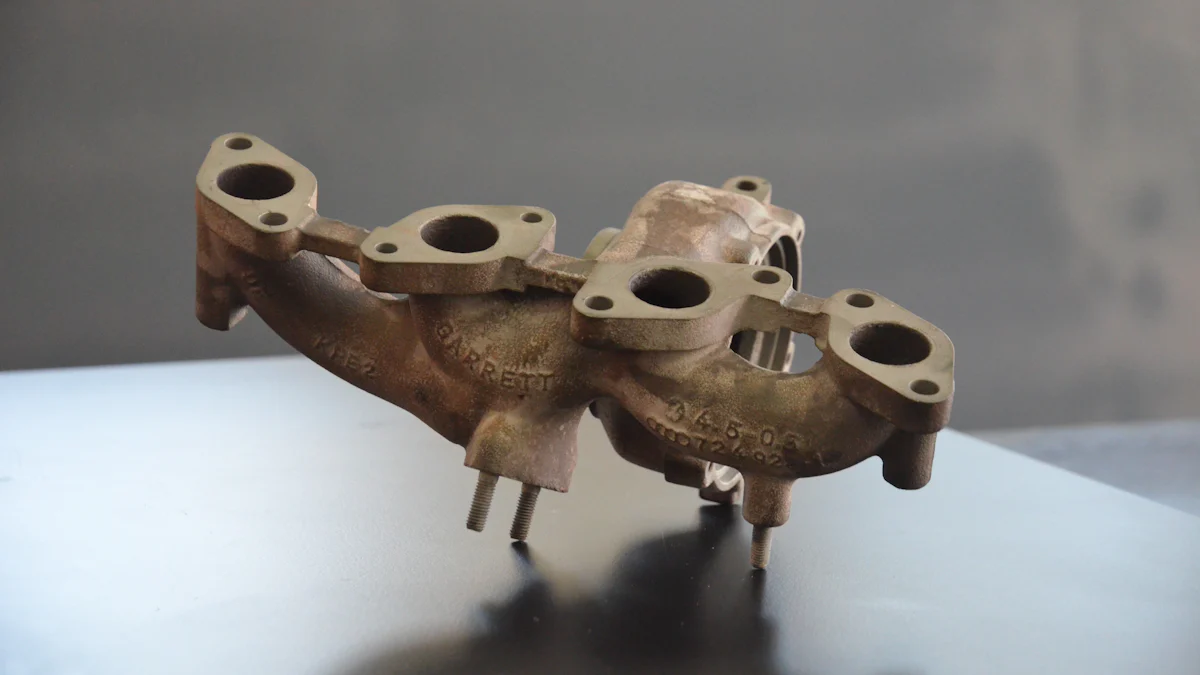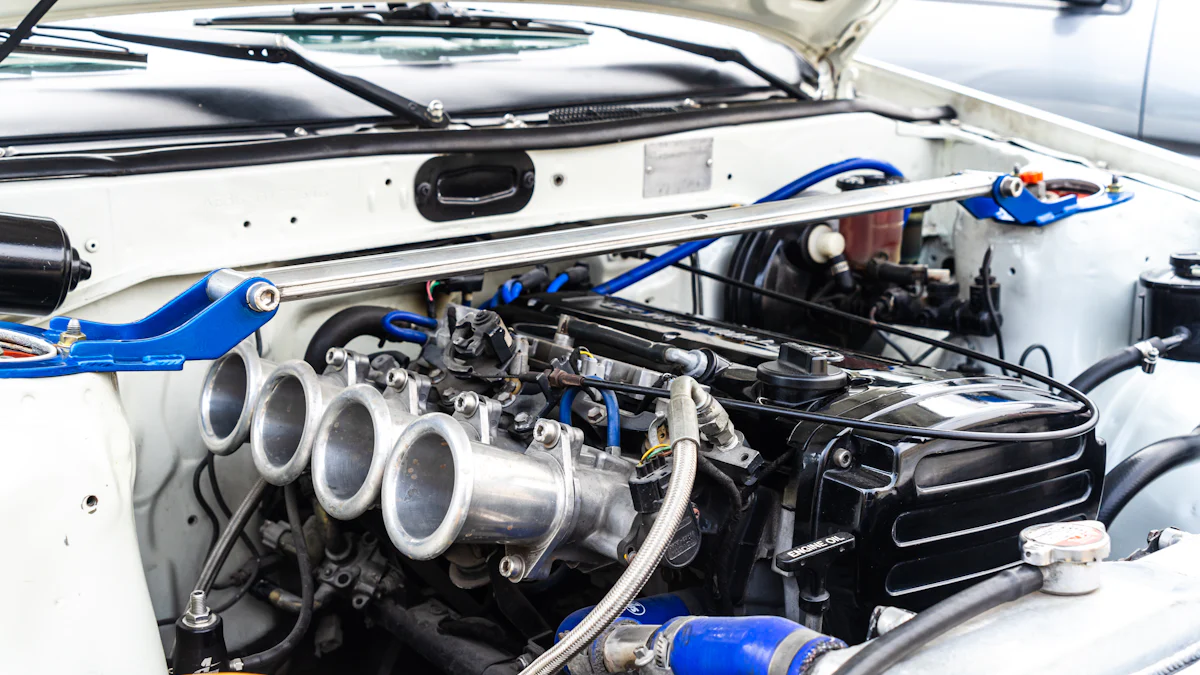
Dealing with an unexpected exhaust manifold leak repair cost can catch any driver off guard. The repercussions of neglecting an Engine exhaust manifold issue can extend beyond just financial burdens. Recognizing the signs and understanding the potential impacts is crucial for vehicle health and safety. In this guide, readers will explore the nuances of exhaust manifold leak repair costs, uncovering essential insights to make informed decisions and safeguard their vehicles.
Understanding Exhaust Manifold Leaks

When it comes to exhaust manifold leaks, understanding the intricacies of this issue is vital for every vehicle owner. An exhaust manifold leak occurs when there is a break or damage in the component responsible for collecting exhaust gases from multiple cylinders into one pipe. This crucial part plays a significant role in ensuring that harmful gases are safely directed out of the engine and away from the vehicle.
What is an Exhaust Manifold Leak?
Definition and Function
The exhaust manifold serves as a pathway for exhaust gases to exit the engine cylinders and flow towards the catalytic converter. It is typically made of cast iron or stainless steel to withstand high temperatures and harsh conditions within the engine compartment. A leak in this component can disrupt the proper flow of exhaust gases, leading to potential hazards.
Common Causes
According to Mechanics, bad exhaust manifold gaskets can also cause exhaust leaks, resulting in a noticeable hissing sound emanating from the engine bay. This hissing noise, often heard during idling or acceleration, indicates a possible issue with the exhaust system. Additionally, if there is a crack in the manifold or head pipe, compressed air may escape, causing further complications.
Symptoms of an Exhaust Manifold Leak
Audible Signs
An unmistakable sign of an exhaust manifold leak is unusual noises coming from your vehicle’s engine bay. Typically, you would only hear exhaust sounds after they pass through the muffler, making them relatively quiet. However, with a leak in the exhaust manifold above the muffler, louder noises such as hissing, rumbling, or gear-like sounds may become apparent.
Visual Indicators
Inspecting your vehicle’s engine components can reveal visible signs of an exhaust manifold leak. If you notice any cracks or damage on the manifold itself or near its connection points, it could indicate a potential issue that needs immediate attention.
Performance Issues
A malfunctioning exhaust manifold can impact your vehicle’s overall performance. Reduced power output, decreased fuel efficiency, and even strange odors while driving are all indicators that there might be a problem with your exhaust system.
Risks of Ignoring an Exhaust Manifold Leak
Ignoring an exhaust manifold leak can have severe consequences for both your health and your vehicle’s well-being. If toxic gases escape into the cabin due to a leak in the manifold, it poses serious health hazards to anyone inside the vehicle. Moreover, prolonged exposure to these fumes can lead to respiratory issues and other health concerns.
As highlighted by experts in automotive mechanics, addressing any signs of an exhaust manifold leak promptly is crucial for maintaining your vehicle’s safety and performance levels. By recognizing these symptoms early on and taking proactive measures to resolve them, you can prevent further damage and ensure that your vehicle operates smoothly.
Factors Affecting Repair Costs
When considering the exhaust manifold leak repair cost, several factors come into play that can influence the overall expenses. Understanding these elements is essential for making informed decisions and managing your budget effectively.
Labor Costs
Mechanic Rates
The rates charged by mechanics for exhaust manifold repairs vary depending on their experience, location, and expertise. Seasoned mechanics may command higher fees due to their skill level and reputation in the industry. On average, labor costs can range from $80 to $100 per hour, with more complex repairs requiring additional time and thus increasing the overall expense.
Time Required
The duration needed to complete an exhaust manifold repair directly impacts the labor costs associated with the service. Simple fixes such as tightening bolts or replacing gaskets may only take a few hours to complete, resulting in lower labor charges. However, extensive repairs involving manifold replacement or intricate welding work can prolong the repair process, leading to higher hourly rates and overall costs.
Parts and Materials
Replacement Parts
The type of parts used during an exhaust manifold repair significantly influences the total cost of the service. Original equipment manufacturer (OEM) parts are typically more affordable compared to performance parts due to their standard specifications and widespread availability. On average, parts account for a substantial portion of the repair expenses, ranging from $933 to $970 for a complete replacement.
Quality of Materials
Choosing high-quality materials for your exhaust manifold repair can contribute to better long-term performance and durability. Opting for durable gaskets, heat-resistant seals, and corrosion-resistant components ensures that your exhaust system functions optimally and withstands harsh operating conditions. While premium materials may incur slightly higher costs initially, they offer greater reliability and reduce the likelihood of future repairs.
Vehicle Make and Model
Specific Brand Costs
The make and model of your vehicle play a significant role in determining exhaust manifold repair costs. Each vehicle brand utilizes unique engine configurations and components, affecting both part prices and labor time required for repairs. Common vehicles with readily available parts tend to have lower replacement costs compared to rare or high-performance models that necessitate specialized components.
Complexity of Repair
The complexity of repairing an exhaust manifold varies based on the vehicle’s design and engineering specifications. Certain models may feature intricate exhaust systems that require additional time and expertise to service effectively. As a result, repairs on complex vehicles often entail higher labor charges and increased part expenses due to the specialized nature of the work involved.
Location and Shop Rates
Regional Differences
- In different regions, the cost of repairing an exhaust manifold leak can vary significantly.
- Mechanics’ rates may differ based on the area, with some regions charging higher fees due to demand or living costs.
- It’s essential for vehicle owners to research local repair shops and compare prices to ensure they receive a fair deal.
- By understanding regional differences, individuals can make informed decisions about where to have their exhaust manifold repaired.
Shop Reputation
- The reputation of a repair shop plays a crucial role in determining the overall experience and quality of service.
- Shops with positive reviews and satisfied customers are likely to provide reliable repairs at competitive rates.
- Vehicle owners should seek recommendations from friends or online platforms to find reputable shops known for their expertise in exhaust system repairs.
- Choosing a well-established and trustworthy shop can instill confidence in the repair process and result in long-lasting solutions for exhaust manifold issues.
By considering regional variations in repair costs and selecting reputable shops with a history of customer satisfaction, individuals can navigate the complexities of exhaust manifold leak repairs more effectively.
Repair Options and Costs

DIY Repairs
When considering exhaust manifold leak repair cost, opting for DIY repairs can be a cost-effective solution for those with mechanical skills. Here are the tools and materials needed along with a step-by-step guide to assist in addressing the issue promptly.
Tools and Materials Needed
- Socket Wrench Set: Essential for loosening nuts and bolts.
- Gasket Sealant: Helps create a tight seal between components.
- Safety Gloves and Goggles: Protects against heat and debris.
- Jack Stands: Ensures safety when working under the vehicle.
- New Exhaust Manifold Gasket: Required for replacement.
Step-by-Step Guide
- Prepare the Vehicle: Park on a flat surface, engage the parking brake, and let the engine cool down.
- Locate the Manifold: Identify the exhaust manifold under the hood.
- Remove Old Gasket: Unscrew bolts securing the manifold, remove old gasket, and clean surfaces.
- Install New Gasket: Place new gasket carefully, align manifold, and tighten bolts securely.
- Test for Leaks: Start the engine to check for any signs of leaks or unusual noises.
Professional Repairs
For those preferring expert assistance, seeking professional help is advisable to ensure thorough repairs are conducted efficiently.
Average Costs
The average cost of professional exhaust manifold repairs ranges from $500 to $1500 depending on labor rates, parts used, and the extent of damage.
Choosing a Mechanic
- Research Local Mechanics: Look for reputable shops with experience in exhaust system repairs.
- Ask for Recommendations: Seek referrals from friends or online platforms to find trusted professionals.
- Inquire About Warranty: Ensure that repair services come with a warranty for added peace of mind.
Cost Comparison
Comparing DIY efforts with professional services can provide insights into long-term savings and overall effectiveness in addressing exhaust manifold leaks.
DIY vs. Professional
- DIY repairs may save money upfront but could lead to complications if not executed correctly.
- Professional services offer expertise and assurance of quality workmanship but come at a higher initial cost.
Long-term Savings
Investing in professional repairs initially may prevent further damage that could incur higher costs down the line due to improper fixes or overlooked issues.
Preventive Measures
Regular Maintenance
- Schedule routine inspections to identify potential issues early on.
- Conduct periodic checks on the exhaust manifold for signs of wear or damage.
- Ensure proper installation of the manifold to prevent leaks and performance issues.
- Follow the manufacturer’s guidelines for maintenance intervals and servicing recommendations.
Early Detection
- Listen for any unusual noises coming from the engine bay that could indicate a leak.
- Inspect the exhaust system regularly for visible signs of cracks, rust, or loose components.
- Monitor your vehicle’s performance for any sudden changes in power output or fuel efficiency.
- Address any odors or fumes inside the cabin promptly to prevent health risks.
By adhering to a strict regimen of regular maintenance and staying vigilant for early warning signs, vehicle owners can mitigate the risks associated with exhaust manifold leaks and ensure their vehicles operate at peak efficiency. Remember, prevention is key to avoiding costly repairs and safeguarding both your vehicle’s longevity and your well-being.
- To summarize, understanding the signs and risks of an exhaust manifold leak is crucial for vehicle maintenance.
- Promptly addressing any issues can prevent health hazards and costly repairs down the line.
- Opting for professional repairs ensures safety and long-term effectiveness, safeguarding both your well-being and your vehicle’s longevity. Remember, prevention is key to maintaining a healthy exhaust system.
Post time: Jun-07-2024



